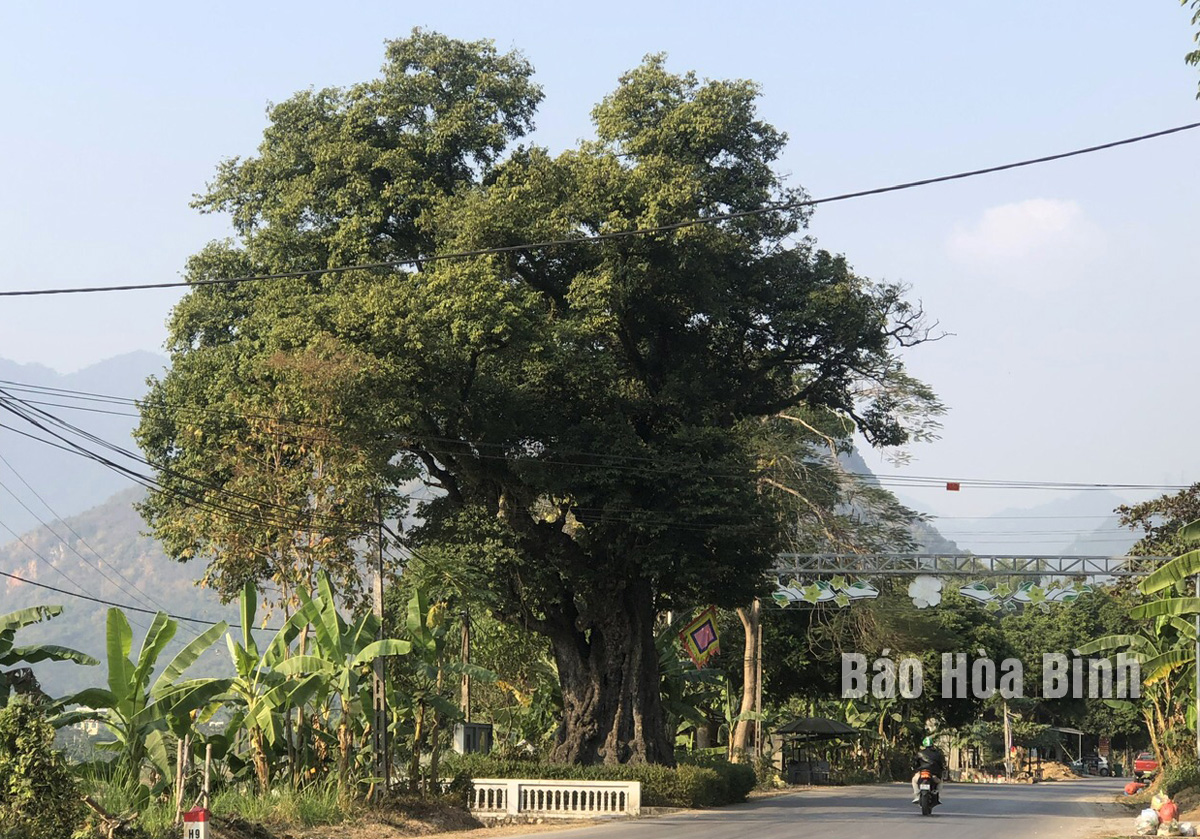
Authorities and residents of Chieng Chau commune, Mai Chau district, are making efforts to preserve and promote the historical value of a centuries-old gold apple tree (scientifically known as diospyros decandra lour), which has been recognised as a national heritage tree.

The gold apple tree in Mo hamlet, Chieng Chau commune, is regarded as a
"living witness" to the ups and downs of Mai Chau's history.
Located
in Mo Hamlet, the tree has stood through centuries of history, from executions
in legendary battles to massacres under French colonial rule. During wartime,
it provided shelter for guerrilla forces, withstanding heavy bombing and
remaining resilient to this day.
Recognised
as a Vietnamese heritage tree in 2016, it stands as a symbol of resilience and
cultural pride for the local community.
Ha
Thi Yen, Secretary of the Party cell of Mo hamlet, highlighted the recognition
as an important step in preserving cultural identity and passing down
historical awareness to future generations.
Authorities
in Chieng Chau commune have also incorporated the tree into local tourism
development plans.
Ha
Van Tiep, Chairman of the commune People's Committee, noted plans to integrate
the site with other attractions like Lac hamlet and Pieng Kem Cave, aiming to
showcase both the area's natural beauty and historical significance.
The
preservation of the heritage tree is part of broader efforts to maintain
cultural heritage and promote spiritual tourism in the region.
The People's Committee of Lo Son commune, Tan Lac district, has organised the local annual traditional stream fishing festival on April 19 - 20.
As a land deeply intertwined with human history and Vietnam’s millennia-long journey of nation-building and defence, Hoa Binh is often revered for its epic tales and legends.
Residents of Hoa Binh boast a rich cultural identity, reflected in their unique language, traditional attire, customs, and folk melodies – described as "sweet as honey, clear as a mountain stream.”
Lac Son district’s Vu ban town held the 2025 Truong Kha temple festival on April 12–13 (the 15th–16th days of the third lunar month). Since its revival in 2019, the festival has been organised every three years, preserving valuable intangible heritage while meeting the community’s cultural and spiritual needs.
The clothing of women reflects the culture of the Muong, Thai, Tay, Dao, and Mong ethnic groups in the northern province of Hoa Binh.
Gongs hold a special place in the cultural and spiritual life of the Muong ethnic people in Hoa Binh province. More than musical instruments, they are an indispensable part of community rituals and collective memory, echoing through generations as a spiritual thread linking the past, present, and future.



